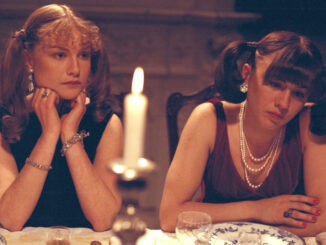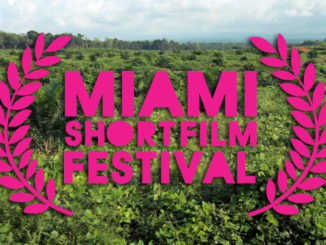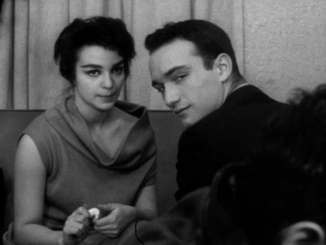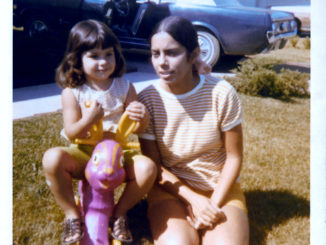September 20th, 2009. 8:00 p.m.
 A new and unprecedented one-hour documentary on the remarkable history, and perhaps even more remarkable survival of Miami’s landmark Vizcaya is scheduled to air on September 20th on WPBT2 at 8:00 p.m. The documentary, “Vizcaya”, narrated by actor and part-time Miami resident, Andy Garcia, is available for purchase at Vizcaya’s Café and Shop and through the museum’s web site.
A new and unprecedented one-hour documentary on the remarkable history, and perhaps even more remarkable survival of Miami’s landmark Vizcaya is scheduled to air on September 20th on WPBT2 at 8:00 p.m. The documentary, “Vizcaya”, narrated by actor and part-time Miami resident, Andy Garcia, is available for purchase at Vizcaya’s Café and Shop and through the museum’s web site.
“This documentary about Vizcaya is the first of its kind. Never before has an all-encompassing documentary about this National Historic Landmark been created,” said producer Linda Corley.
Documentary filmmaker Corley, who has a background in the arts, decorative arts and architecture, has long been drawn to the enchantment, the mystery and the beauty of Vizcaya. “I thought long and hard about it and it is an amazing story, from its envisioning to its completion,” said Corley. “When people visit the house, they ooh and aah about the paintings, carpets, tapestries, etc., but visitors don’t seem to understand what it took to build the house.”
The film details the incredible vision of James Deering in constructing Vizcaya and the astounding confluence of talent that made it possible – and that made it unique in its time as well as today.
Deering, vice president of the International Harvester Company, which produced agricultural equipment for a worldwide market, envisioned Vizcaya as his winter estate. He lived at Vizcaya from 1916 until his death in 1925. To bring his dream-home to fruition, Deering engaged the assistance of Paul Chalfin, a young New York painter, to supervise the entire project. Deering and Chalfin traveled throughout Europe surveying residential architecture for ideas and design elements, such as doors, wall panels, mantels and ceilings for incorporation into the proposed home. Also engaged to work on the project were architect F. Burrall Hoffman and Colombian landscape architect Diego Suarez.
The house was intended to appear three-to-four hundred years old and as if it had been occupied by several generations of a family. The Main House has 34 decorated rooms with nearly 3,000 art objects, spanning two millennia. The expansive gardens combine Italian and French designs with an American context. Suarez and Chalfin worked for several years, perfecting the design of the gardens as vast and distinct outdoor rooms.
The documentary details the process of designing and building Vizcaya, which was no easy task. The land itself presented a challenge: it was riddled with land crabs, mosquitoes, and alligators. As the house was constructed at the water’s edge, pilings had to be built, which at that time, was an astonishing accomplishment of engineering. Employing craftsmen and acquiring materials were also difficult. European artisans returned to Europe during World War I and when the U.S. entered the war in 1917, labor was hard to come by. Architectural materials, priceless tapestries, vases and art were purchased from European dealers.
At the time of Vizcaya’s construction, Miami’s population was around 10,000. More than 1,000 workers were hired, including laborers and craftsmen from the Caribbean and Europe. In addition to the house and gardens, the complex included a farm, livestock, and a variety of other service facilities covering 180 acres on both sides of South Miami Avenue.
It took almost 10 years to construct Vizcaya – the architecture, gardens and fountains, to acquire the art and to hire artisans to create the masterpiece we now know as Vizcaya. “Vizcaya” details not just the marvel of its creation, but also that it continues to stand. Massive hurricanes – that of 1926 and 1992’s Hurricane Andrew were but two of the destructive storms to severely damage Vizcaya – and yet it endured.
Deering passed away in 1925. His heirs, Marion Deering McCormick and Barbara Deering Danielson, contacted Chalfin to oversee the first renovation of Vizcaya, in 1933-1934. The McCormicks and Danielsons attempted to open the estate to the public, but another major hurricane in 1935 overwhelmed their efforts. Eventually much of the land was transferred and, in 1952, Deering’s heirs conveyed the main house and formal gardens to Dade County. In 1955, the County exercised an option to acquire the village as well. Deering’s heirs donated the estate’s substantial furnishings and art to the County on condition that Vizcaya be used as a public museum in perpetuity.
In order to tell the story of Vizcaya, Corley conducted extensive interviews with a wide array of sources: authors Witold Rybczynski and Laurie Olin; historian Arva Moore Parks; University of Miami professor of Architecture Joanna Lombard, and Vizcaya curator Flaminia Gennari-Santori. Corley also interviewed heirs of J.J. Bennett, a land surveyor and engineer who was the first man Deering hired and the last to leave the project, and the children of unofficial Vizcaya historian, Eustace Edgecombe, who worked at Vizcaya from 1915 to the mid-1960s.
Overcoming immense obstacles to its building and ongoing challenges, Vizcaya has indelibly imprinted itself upon the history and culture of South Florida. Said Vizcaya Executive Director Joel Hoffman: “Vizcaya has endured many challenges from its creation through to its ongoing preservation. We are now the stewards of this local treasure and National Historic Landmark. And we are pleased to have the opportunity to share the story of James Deering’s extraordinary estate with people around the world.”
Vizcaya Museum and Gardens
3251 South Miami Avenue
Miami, FL 33129
305.250.9133
www.vizcayamuseum.org






Be the first to comment